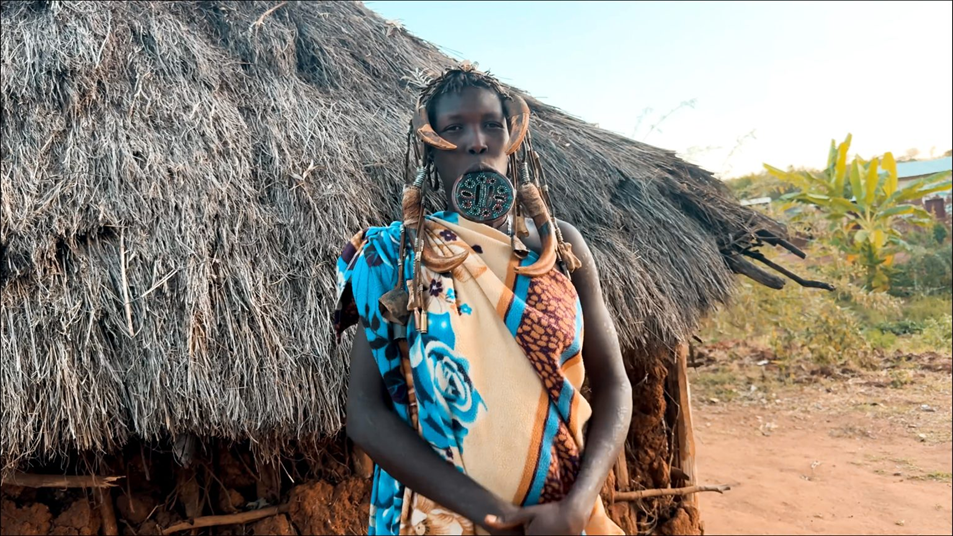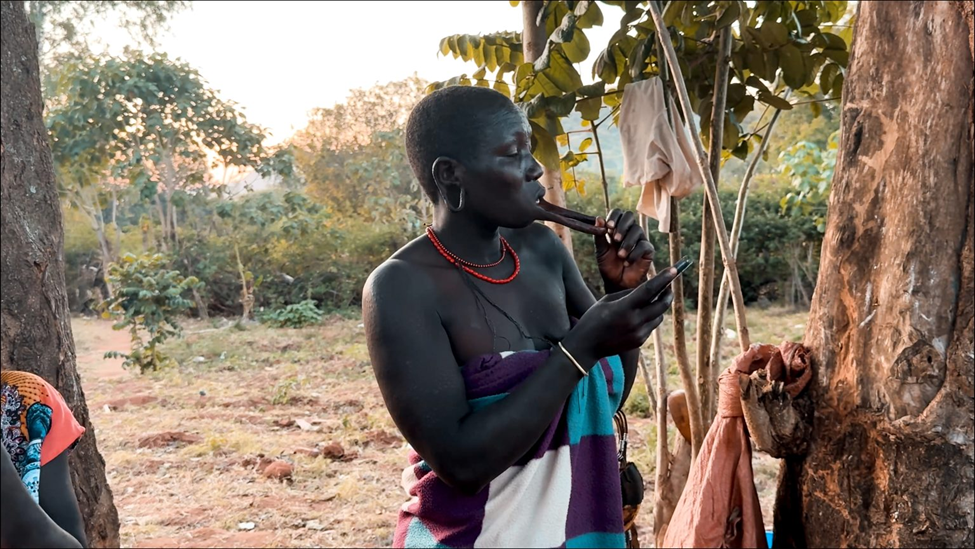The Mursi people (who refer to themselves as Mun) stand as one of Africa’s most culturally distinct and fascinating ethnic groups. With a population estimated at under 10,000, the Mursi is one of the most isolated and culturally diverse regions on Earth. Cut off for centuries from urban influence, they have preserved their ancient customs with pride, turning their land, their bodies, and their art into storytelling canvases.

The most recognizable feature of Mursi culture is the practice of lip plate wearing among its women. Known as dhebi a tugoin, the tradition involves a girl’s lower lip being pierced and gradually stretched starting around the age of 15 or 16 most probably around puberty, when a small incision is made. Over time, the plate’s size increases, often reaching up to 12 centimeters in diameter which is made from mud or clay.
To the Mursi, beauty isn’t about symmetry or softness; it’s about endurance and strength. The lip plate is not merely an ornament, it’s a conversation piece between generations.
It signals that a girl has become a woman, ready for marriage, motherhood, and community leadership.

Historically, it is said that larger plates signified higher dowries, reflecting a woman’s value in marriage. Anthropologists suggest that the practice may have originated as a defense mechanism to make women less appealing to slave traders. When women altered their appearance to avoid capture. What began as defiance evolved into empowerment.
Customarily, cattle are the heartbeat of Mursi society, and women play a crucial role in tending, trading, and preserving this wealth. The size of a woman’s lip plate is often linked symbolically to her family’s cattle wealth, though this interpretation is debated among younger generations.
Despite how large and dramatic the lip plates appear, Mursi women don’t actually wear them all the time. The plates are mostly for ceremonial occasions like weddings, dances, community gatherings, or when tourists visit.

In everyday life, they usually remove the lip plate to eat, drink, talk, or rest. When the plate is off, the lip naturally droops downward due to years of stretching, leaving a visible opening. So, they typically eat by Spoon-feeding or using their fingers to gently place food into the mouth.
The process is slow and deliberate, but not painful. Their lips have long adapted to flexibility and movement.

While the custom remains a powerful mark of heritage, the growing influence of modernity and increased interaction with the outside world, particularly through tourism, means that some younger Mursi women are now choosing not to have their lips cut.
By: Idris Olayinka

